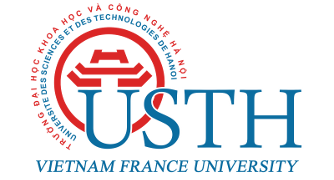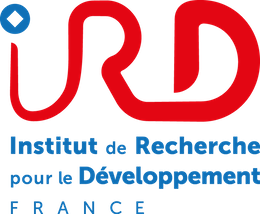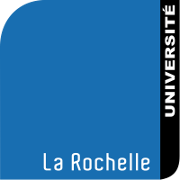Research Projects
Together with most of the partners of this program, we are working on the two following projects.
– LittoKong (2019). Sensitization of managers to the prevention of water-related risks: modeling, simulation, and participation in the Mekong Delta. Grants from the joint call for proposal CNRS et IRD about Natural Risks (AAP 2019). Project in collaboration with the University of Tours, the University of La Rochelle and the University of Can Tho (Vietnam). 20k€ (estimation).
– HoanKiemAir (2019). Toward a tangible and interactive interface for the simulation of traffic and pollution in the Hoan Kiem district (Hanoi, Vietnam). Grant from the French Embassy in Vietnam. Project in collaboration with University Thuy Loi and PRX. 5k€ (2019).
– GEMMES (2019-2022). Assessment of the impact of Climate Change in Vietnam. Work Package leader of the WP4 Regio about the assessment of the local impact of climate change. Funded by AFD. 1M€ (estimation).
– LungCancerCare (A system to support doctors in Lung Cancer Diagnosis and Treatment): Lung cancer is one of the most serious and common types of cancer all over the world, both in number of new patients and in number of fatalities. There were total 1.69 millions of fatalities because of lung cancer in 2015 only (source: World Health Organization). Lung cancer is the most common type of cancer for both genders in Vietnam. According to statistics from Ministry of Health, Vietnam has 25200 new patients in 2017 and expected 30.000 new patents per year in 2020. The goal of this project is to study and develop efficient deep learning models in order to improve the accuracy and computational performance to lung cancer image analysis algorithms. Specific goals include: (1) Building an annotated image dataset for lung cancer analysis with case studies in Vietnamese hospitals; (2) Studying and proposing deep learning models for efficient detection and classification of lung tumors as benign and malignant; (3) Developing a decision support software to assist doctors in lung cancer detection.
– iMorph (Detection of geometric morphometric landmarks in 2D insect wing images): The field of morphometrics, or morphometry, is concerned with the analysis of form, which is defined by shape and size, of an object. Shape is defined as the set of geometric properties of an object that are invariant to position, orientation, and scale. In a population of specimens of interest, shape variability with size, i.e. allometry, is also considered. The main goal of morphometrics is to elucidate how shapes vary and their covariance with other variables such as diseases, environmental stresses, or development etc. Morphometrics is very important in biology because it allows quantitative descriptions of organisms, hence facilitating comparative studies by statistical analysis methods. Landmark-based geometric morphometrics uses a set of landmarks to describe shape. Landmark, a two- or three-dimensional point represented by locus coordinates, is described by a tightly defined set of rules that indicates the evolutionary significance for the organism in question. Given these defined rules, it is next necessary to identify the landmarks on each specimen. This task is normally done by an expert, however, it is time-consuming and error-prone. Therefore, in this project, we aim to automate this by processing object images and employing an image recognition & machine learning model to propose landmark candidates.
– MiJVeh (Mitigation against Jamming Attacks in Vehicular Networks): Vehicular Ad hoc Networks (VANETs) plays a role of wireless communication technology supporting Intelligent Transportation System (ITS) in the domain of vehicles. Characteristics of vehicular environment always create challenges. A wide range of applications and usage scenarios requires for enhancements in standardized protocols and security in vehicular networks before implementing in daily life. One of common types of attacks in VANETs is jamming attack. Although several detection methods have been proposed to deal with jamming attack, such methods specified for basic safety messages in vehicular networks still remains an open topic for researching due to the variety of ITS applications and scenarios. Moreover, after detecting attack, there is a need for a defense protocol to react to the attack. In this project, our objectives are studying and proposing mechanisms for devices in vehicular networks (vehicles installed communication unit) to react to jamming attacking incidents in order to recover the communication in the networks.
– HAGEDL (Real time Hand Gesture Recognition based on Deep Learning): Hand gesture is one of the most natural and intuitive ways people use to communicate and express emotions. Adoption of hand gesture in Human Machine Interaction (HMI) promises to provide users with comfort and ease. We introduce in this paper a vision-based recognition system for static hand gestures. Our method utilizes YOLOv3, state of the art recognition deep neural network; therefore, it does not rely on complex image processing pipelines like many traditional systems. Experiments show that our framework is capable of processing full hd videos in realtime speed with high accuracy.
– ESCAPE is an ANR project that focus on the simulation of urban area evacuation in case of catastrophe. The simulator is based on the gama simulation platform and is based on agent-based modeling of the evacuation process: this allow to explore individually based strategy, including individual knowledge about evacuation plan, emotion during egress and individually based mobility model with several modes. The project focus on three case studies: chemical risk with industry explosion in the center of the city of Rouen (France), flash flood risk at the valley of Authion (France) and Hoa Binh dam break in the region of Hanoi – Red River (Vietnam).
– Gen* is an open source java library that make it possible to generate spatially explicit and socially connected synthetic population using any survey and GIS data. The toolkit is also available as a Gama plugin and can be used through the Kepler workflow management tool. How aim is to provide to computer scientist and none programmers the access to state of the art algorithms to solve synthetic population generation, explicit localization and network generation of synthetic entities. The library is under development but already provide several algorithms for each of this three part: gospl, spll and spin. See https://github.com/ANRGenstar/
– AgroLD (The Agronomic Linked Data project): Recent advances in high-throughput technologies have resulted in tremendous increase in the amount of data in the agronomic domain. This data explosion in-conjunction with its heterogeneity presents a major challenge in adopting an integrative approach towards research. We are developing AgroLD, a knowledge system that exploits the Semantic Web technology and some of the relevant standard domain ontologies, to integrate information on rice species and in this way facilitating the formulation of new scientific hypotheses. The objective of this effort is to provide the community with a platform for domain specific knowledge, capable of answering complex biological questions. The current phase covers information on genes, proteins, ontology associations, homology predictions, metabolic pathways, plant traits, and germplasm, on the Arabidopsis and rice species.





